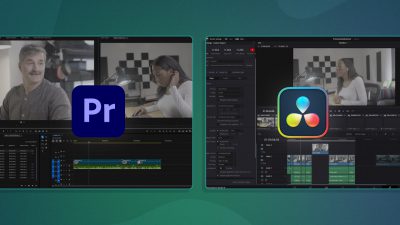Some companies would prefer to stay as far away as possible from controversial issues. However, people have begun to expect more from brands. It’s not enough to have a good product, you also have to be a good global citizen.
But, it’s clearly dicey, at best, to take a stand. Just look at the recent scandal that engulfed Papa John’s after they weighed in on the NFL protests. So, how does a brand responsibly take on a serious and potentially divisive issue?
One strategy that has worked well in the past is a Public Service Announcement (PSA) video. With full control over the message and optics, you can carefully craft a video that best communicates your position. Here are the five key ingredients for a powerful PSA video, and the eight steps you need to take to make your own.
A Short History of the PSA
PSAs originated in the United States and the United Kingdom as short, educational films advocating for public safety concerns. During World War II, they quickly evolved to include government-commissioned short videos to help scale positive public sentiment about the war efforts.
Oftentimes, these public safety commercials would feature familiar characters, and cover the “hot” topics of the day. Many will recall Smokey Bear’s “only you can prevent forest fires” slogan, or the “this is your brain on drugs” frying egg visual.
In the U.S. today, many TV stations are required by the Federal Communications Commission (FCC) to broadcast in the public interest. The PSA remains a popular way to meet that requirement.
Perhaps you’re familiar with this tear-inducing example from the ASPCA? As proven over time, PSAs can be a powerful vehicle for raising awareness and changing public attitudes towards a particular issue.
The Importance of Corporate Social Responsibility
Since the 1960’s, Corporate Social Responsibility has been a part of the consumer vocabulary. With the explosion of the internet and social media in more recent years, buyers are increasingly interested not just in what a business offers, but also in what that brand stands for.
It’s no wonder that, according to this 2015 study, nine in 10 consumers expect companies to not only make a profit, but to also operate responsibly to address social and environmental issues.
That’s all well and good, but you certainly want to make sure people are aware of your efforts, and the causes you’re championing. That’s where PSA videos come in.
In addition to integrating CSR into your everyday business practices, a PSA video is an extremely effective way to quickly garner attention on an issue your company cares about. It is one of the best ways of making compelling emotional appeals, especially to millennials.
Getting Started: What is an Effective PSA Comprised of?
An effective PSA must be well-thought out and planned ahead of time (something we go into further detail on below). First, we’ll share five key tips, including examples, for getting it right.
Timeliness
If you choose an issue already on the general public’s radar, you’ll benefit in several ways. For starters, your campaign can tap into elevated search traffic for terms related to the topic. This means you’re more likely to be heard and to get traction.
Additionally, your audience will most likely be familiar with the topic. This gives you the liberty to dive into the heart of the matter, saving valuable video time.
It will also show your audience that you are listening and paying attention to what is happening in the world. While you don’t have to weigh in on every issue, consumers want to know that you care about the same things they do.
Google did just this when they created their video for the Equal Justice Initiative (EJI). To summarize EJI’s Bryan Stevenson, race relations is an issue that you’re affected by “whether you were born in 1930 or 2017”.
The video features voiceover from Stevenson, and haunting pictures from the past and the present. Only the medium of video can deliver a message in such an impactful way. Overall, the video really leverages the fact that this serious issue is rightfully at the forefront of many people’s minds.
Relevancy
Ideally, the issue your company chooses to address will not only be relevant to your brand, but also speak directly to your target market.
A great example of this comes from AT&T. They took a stand against something nearly every driver has been guilty of: texting and driving.
While it might be surprising that an anti-texting ad is coming from a phone plan provider, it makes sense for the company to encourage customers to be safe drivers. It shows they care about their customers’ well-being.
AT&T certainly did not shy away from the severity of the issue! The ad begins with ordinary people going about their lives. As the video reaches a its climax, phone notifications keep going off and the driver checks them. She doesn’t seem to be driving fast and, in fact, there aren’t many other cars on the road.
Suddenly, before you know it, CRASH. Shattered glass. The point is clear: in the big picture, the notifications just aren’t important. They can wait.
A quick note: AT&T clearly did their homework when creating their PSA. Texting and driving is a leading cause of death for teenage drivers. Kudos to the company for highlighting the issue in such a powerful way, and for continuing the social campaign to encourage safe texting.
Humor
Perhaps after that last example, you might think all PSAs must be Serious with a capital “S”. That’s not necessarily true. When it comes to some issues, being too serious can make it that much more difficult to address them.
It’s also important to consider your audience. Does a lighthearted approach make sense? In Burger King’s case, it absolutely did.
While their audience isn’t solely teens, a large portion of it is. So, it was important for Burger King to use “language” teens would readily understand. And, everyone knows teen language is sarcasm and humor.
Ordinarily, bullying is no laughing matter. But, insert a “bullied” burger into the mix, and things get downright silly.
https://www.youtube.com/watch?v=mnKPEsbTo9s&feature=youtu.be
In its aptly named “Bullying Jr.” PSA, Burger King captures and holds our attention by presenting the serious issue in a not-so-serious way by juxtaposing teen bullying and burger bullying.
Not surprisingly, most customers are bewildered when their burger is served “bullied.” They insist Burger King employees make it right, even demanding to speak to management for the Whopper offense. However, just a fraction of those customers demand any justice for the teen bullying that is also happening while they’re dining in the fast food restaurant.
Of the handful that even notice it, only a couple of people address the problem. Between footage of the customers being bewildered, or stepping in to help out a bullied teen, Burger King serves up cold, hard facts and statistics about bullying. They include just enough reality to balance out the silliness of “bullied burgers”. Good job, Burger King.
Emotional
Think companies can’t get emotional? Think again. Video provides an opportunity to tell a story, and elicit the feelings of your audience in a way that no other online medium can.
Immigration-focused PSA “The Entire Journey” by 84 Lumbar takes viewers along for the perilous trek a young migrant and her daughter endure in their journey to becoming American citizens. Whichever side of the immigration debate you fall on, seeing two vulnerable yet determined people tirelessly work towards their goal is bound to provoke a reaction.
It’s worth noting that the commercial received some flak for taking too long to get to the (not entirely clear) point. That said, the gripping story portrayed in their video generated a lot of online buzz for the otherwise not very well-known private company. According to 84 Lumbar, it helped them reach their goal of generating many new entry-level job applicants.
Honesty
All the preceding examples are instances where a company chose to throw its hat in the ring. This fifth example is very different. In this case, the company made the PSA video in response to criticism for not taking on the issue more directly.
Recently, the National Football League (NFL) faced serious backlash from the general public due to their failure to address domestic violence and sexual assault, issues that several of the League’s most popular players had been involved in.
One such incident included Baltimore Ravens star running back Ray Rice who was caught on camera knocking out his fiancee and dragging her unconscious body from an elevator. Initially, Rice was suspended for two games.
However once the public saw the video, NFL Commissioner Roger Goodell came under fire for it (and other incidences). The NFL knew it had to make a statement about domestic violence in a big way.
Finally showing they understood the severity of the issue, the League sponsored Super Bowl 2015 airtime for the NoMore.org organization to air the powerful “Listen” PSA. While one sponsored commercial isn’t enough on it’s own, this video shows what an impact it can have to kick off dialogue and positive change.
These types of PSA videos must be handled extremely carefully. They risk missing the mark and falling flat or, worse yet, possibly looking defensive. We think this particular PSA video manages to address the issue head on, without any fallout for the brand.
Creating Your PSA: The Steps
So, ready to make your own PSA video? Here are the steps to follow:
1. Select your PSA topic
Ensure it makes sense for your company to back the issue or, at the very least, that it is something that you’re passionate about.
2. Determine the goal of your PSA
Are you trying to spread general awareness? Kick off a campaign? Be controversial? Understand what you hope to achieve before you get started, and keep it in mind as your craft your PSA.
3. Determine your target audience
Just like any other video, or marketing effort for that matter, it’s important to be mindful of who you’re talking to. Understand whether serious language and music will speak to them more, or if you’re better off using humor.
4. Storyboard
Plan out the shots you’ll need in detail. You’ll know the who, what, when, and where throughout the production process. If you’re not familiar with storyboarding, be sure to check out our blog post on the subject.
5. Write a script
Don’t wing this! It’s important that you take your time to ensure you get your message across. Need help? We’ve shared both screenwriting tips and script editing tips.
6. Production
Will you produce your film internally, or will you hire a production studio? Much of this depends on your budget but there are other factors to consider, too. If you decide to produce it in-house, don’t miss these film tips to make the editing process easier.
7. Post-production
You’re almost finished! No matter how you decide to approach the editing process, don’t lose steam at this point. Remember to keep your message and audience in mind as you make the final touches to your PSA video.
8. Share
It’s time to share your message (and all your hard work) with the world! Share your video on your website, via email, and across your social media channels. Keep an eye on engagement analytics, like impressions & plays, unique viewers, and average video engagement, to understand the reach of your video.
People want to feel that the brands they spend their hard-earned money on are aligned with them on the issues they care about. We believe PSA videos are one of the best ways to communicate your company’s stance on an issue in a meaningful and effective way.
Have you ever attempted a PSA video? Tell us about it in the comments below.








